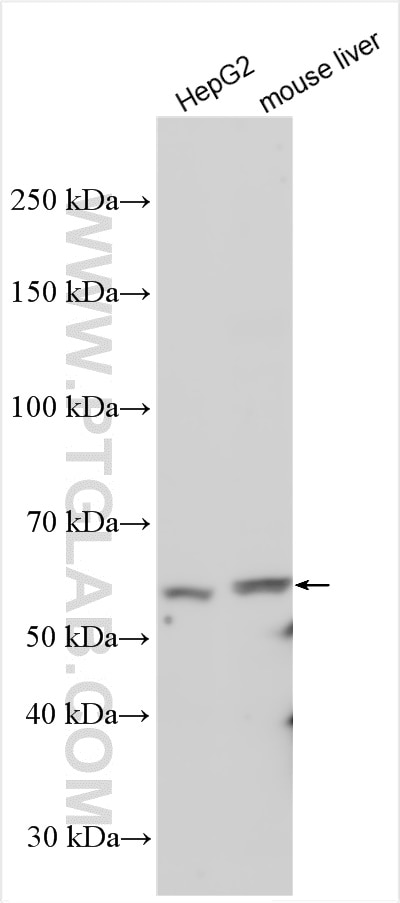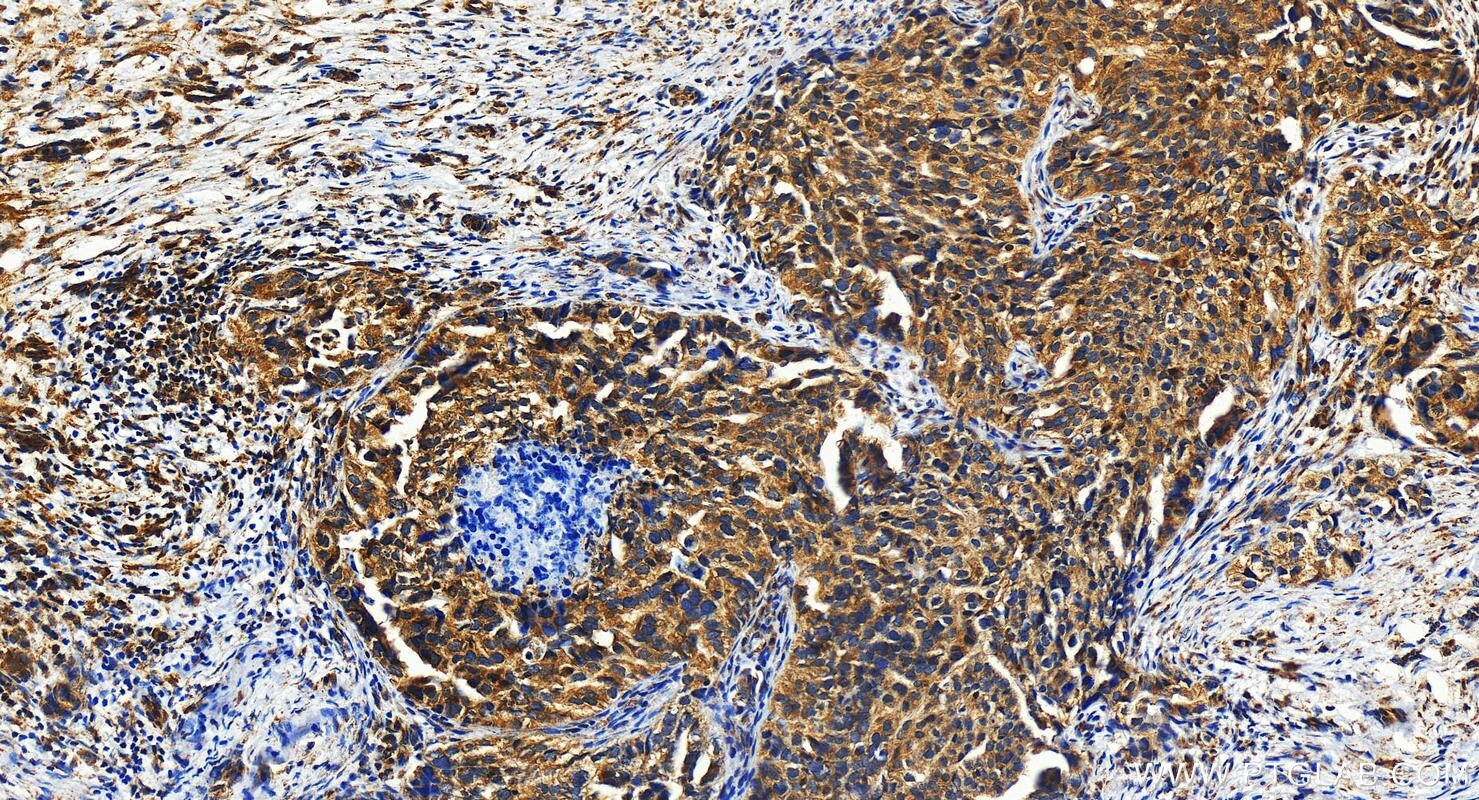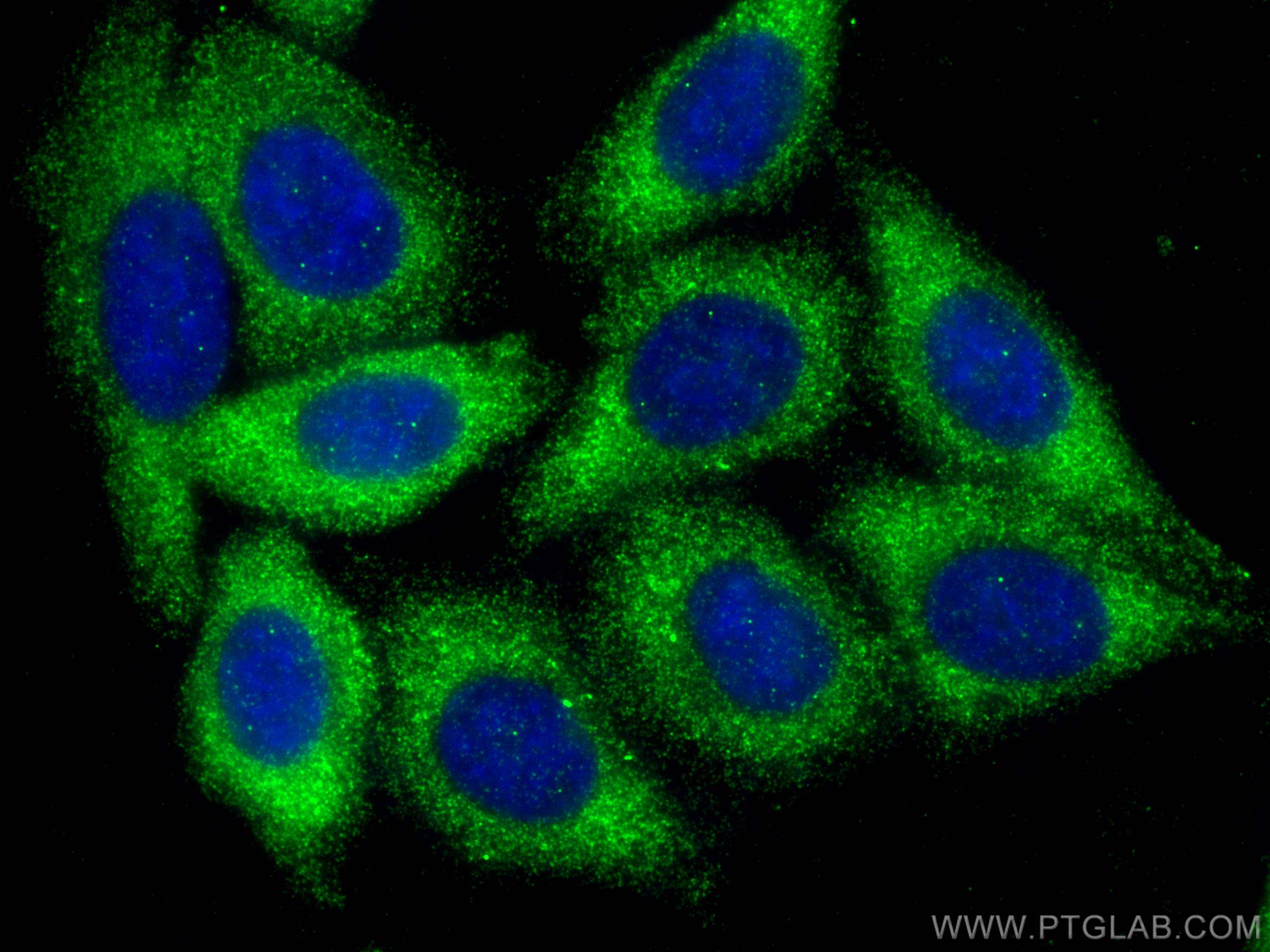SPTLC3 Polyklonaler Antikörper
SPTLC3 Polyklonal Antikörper für WB, IHC, IF/ICC, ELISA
Wirt / Isotyp
Kaninchen / IgG
Getestete Reaktivität
human, Maus
Anwendung
WB, IHC, IF/ICC, ELISA
Konjugation
Unkonjugiert
Kat-Nr. : 16600-1-AP
Synonyme
Geprüfte Anwendungen
| Erfolgreiche Detektion in WB | HepG2-Zellen, Mauslebergewebe |
| Erfolgreiche Detektion in IHC | human ovary cancer tissue Hinweis: Antigendemaskierung mit TE-Puffer pH 9,0 empfohlen. (*) Wahlweise kann die Antigendemaskierung auch mit Citratpuffer pH 6,0 erfolgen. |
| Erfolgreiche Detektion in IF/ICC | HepG2-Zellen |
Empfohlene Verdünnung
| Anwendung | Verdünnung |
|---|---|
| Western Blot (WB) | WB : 1:1000-1:4000 |
| Immunhistochemie (IHC) | IHC : 1:250-1:1000 |
| Immunfluoreszenz (IF)/ICC | IF/ICC : 1:50-1:500 |
| It is recommended that this reagent should be titrated in each testing system to obtain optimal results. | |
| Sample-dependent, check data in validation data gallery | |
Veröffentlichte Anwendungen
| WB | See 1 publications below |
Produktinformation
16600-1-AP bindet in WB, IHC, IF/ICC, ELISA SPTLC3 und zeigt Reaktivität mit human, Maus
| Getestete Reaktivität | human, Maus |
| In Publikationen genannte Reaktivität | human |
| Wirt / Isotyp | Kaninchen / IgG |
| Klonalität | Polyklonal |
| Typ | Antikörper |
| Immunogen | SPTLC3 fusion protein Ag9760 |
| Vollständiger Name | serine palmitoyltransferase, long chain base subunit 3 |
| Berechnetes Molekulargewicht | 175 aa, 20 kDa |
| Beobachtetes Molekulargewicht | 62 kDa |
| GenBank-Zugangsnummer | BC020656 |
| Gene symbol | SPTLC3 |
| Gene ID (NCBI) | 55304 |
| Konjugation | Unkonjugiert |
| Form | Liquid |
| Reinigungsmethode | Antigen-Affinitätsreinigung |
| Lagerungspuffer | PBS with 0.02% sodium azide and 50% glycerol |
| Lagerungsbedingungen | Bei -20°C lagern. Nach dem Versand ein Jahr lang stabil Aliquotieren ist bei -20oC Lagerung nicht notwendig. 20ul Größen enthalten 0,1% BSA. |
Hintergrundinformationen
Serine-palmitoyltransferase (SPT) is a pyridoxal 5‐phosphate (PLP)-dependent α‐oxoaminotransferase that consists of three core subunits-SPTLC1, SPTLC2, and SPTLC3-that share a mutual homology. The amino acid sequences between SPTLC1 and SPTLC2 (or SPTLC3) show a mutual similarity of about 20%, whereas the sequences for SPTLC2 and SPTLC3 show a significantly higher identity of 68% (with 84% similarity) on the amino acid level. SPTLC3 is not or only little expressed in tissues that are functionally connected to erythropoiesis or immune response like peripheral blood cells, bone marrow, and spleen. Instead, the lack of SPTLC3 expression seems to be compensated by increased expression of SPTLC2 in these tissues. (PMID: 17331073, PMID: 17023427)
Protokolle
| PRODUKTSPEZIFISCHE PROTOKOLLE | |
|---|---|
| WB protocol for SPTLC3 antibody 16600-1-AP | Protokoll herunterladen |
| IHC protocol for SPTLC3 antibody 16600-1-AP | Protokoll herunterladenl |
| IF protocol for SPTLC3 antibody 16600-1-AP | Protokoll herunterladen |
| STANDARD-PROTOKOLLE | |
|---|---|
| Klicken Sie hier, um unsere Standardprotokolle anzuzeigen |




